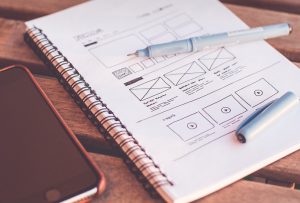
What Exactly Is Civil Engineering Cost Estimation?
Imagine building a bridge, designing a skyscraper, or even paving your own driveway. All of these projects involve significant investment – not just in materials and labor but also in understanding how much they’ll actually cost. This is where civil engineering cost estimation comes in. It’s the art (and science!) of calculating the financial feasibility of any construction project.
In essence, it’s a way to budget for all the costs associated with bringing your vision from concept to concrete reality – from the initial design phase to the final inspections and handover procedures. It goes beyond just figuring out the cost of materials; it encompasses everything from labor charges, permits and approvals, property acquisition (if needed), unforeseen circumstances, and even potential delays.
Why Is Cost Estimation So Crucial for Civil Engineers?
Civil engineering projects demand a keen understanding of construction costs. It’s not just about crunching numbers; it’s about making informed decisions that will influence your project’s success. Here’s why:
- Financial Planning:** Cost estimation allows you to establish realistic budgets, secure funding, and negotiate with contractors effectively.
- Risk Management:** By accurately estimating potential costs, civil engineers can identify and mitigate risks early on, ensuring smooth project execution.
- Informed Decision-Making:** Cost estimations form the bedrock for making strategic decisions regarding material selection, design optimization, and resource allocation throughout the project lifecycle.
The Process of Cost Estimation: A Step-by-Step Journey
The process of estimating civil engineering costs is a multi-faceted journey that begins with gathering information. It involves several crucial steps:
- Project Scope Definition:** Start by clearly defining the project scope – including its objectives, deliverables (e.g., bridge design, water treatment system), and expected outcomes.
- Site Analysis:** Assessing the site’s characteristics is essential for accurate cost estimates. Geological surveys, soil analysis, environmental assessments, and accessibility factors all contribute to a comprehensive understanding of the project location.
- Technical Design Development:** Detailed engineering plans are critical for estimating costs. These plans include architectural drawings, structural designs, electrical schematics, and any other technical specifications that will form the basis for material procurement and labor estimations.
The Role of Technology: How it Makes Cost Estimation Easier
Technology has transformed civil engineering cost estimation. Traditional methods are being complemented by sophisticated tools and software applications:
From advanced building information modeling (BIM) software to automated cost prediction platforms, engineers now have powerful resources at their fingertips:
- Cost Estimation Software:** These programs use historical data, industry trends, and specific project details to generate accurate cost estimates.
- 3D Modeling & Simulation:** Visualizing the project in 3D allows engineers to identify potential challenges beforehand and optimize designs for better cost-efficiency.
- Virtual Prototyping:** Cost estimation can be further enhanced by generating virtual prototypes of the proposed construction, allowing for a detailed analysis of material usage and labor requirements.
The Importance of Transparency: Keeping Cost Estimation Up-to-Date
As projects evolve, costs inevitably change – either due to unforeseen circumstances or changing market conditions. It’s crucial to keep cost estimations updated throughout the project lifecycle:
Here’s why:
- Adaptive Planning:** Regular reevaluation and adjustment of budgets allow for proactive adaptation to unforeseen circumstances, ensuring project continuity.
- Informed Decision-Making:** Updated cost estimations provide valuable insights into the financial viability of different project options and alternatives.
- Risk Management:** By staying informed about market fluctuations and potential risks, engineers can mitigate potential losses and ensure a smoother construction process.
Looking Ahead: The Future of Cost Estimation
As the field evolves with advancements in technology, the future of cost estimation promises even greater accuracy, efficiency, and transparency:
- Artificial Intelligence (AI):** AI-powered algorithms are predicted to become integral to cost estimation, offering unprecedented precision by leveraging vast datasets.
- Machine Learning:** Machine learning models can analyze historical project data and predict future costs with greater accuracy, streamlining the process of building realistic budgets.
- Blockchain Technology: This technology holds potential for increasing transparency in cost estimation by providing secure and tamper-proof records of all financial transactions.



